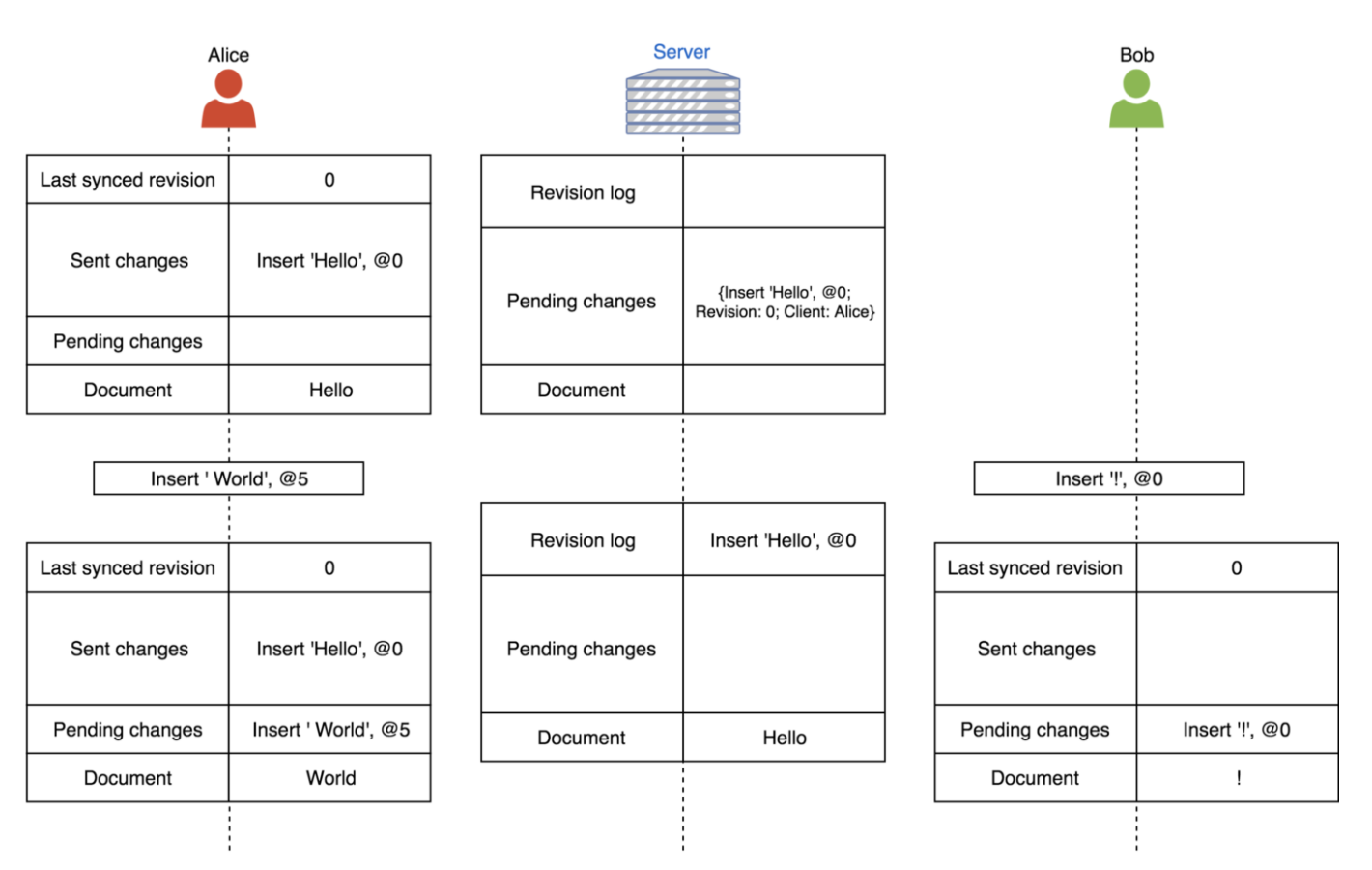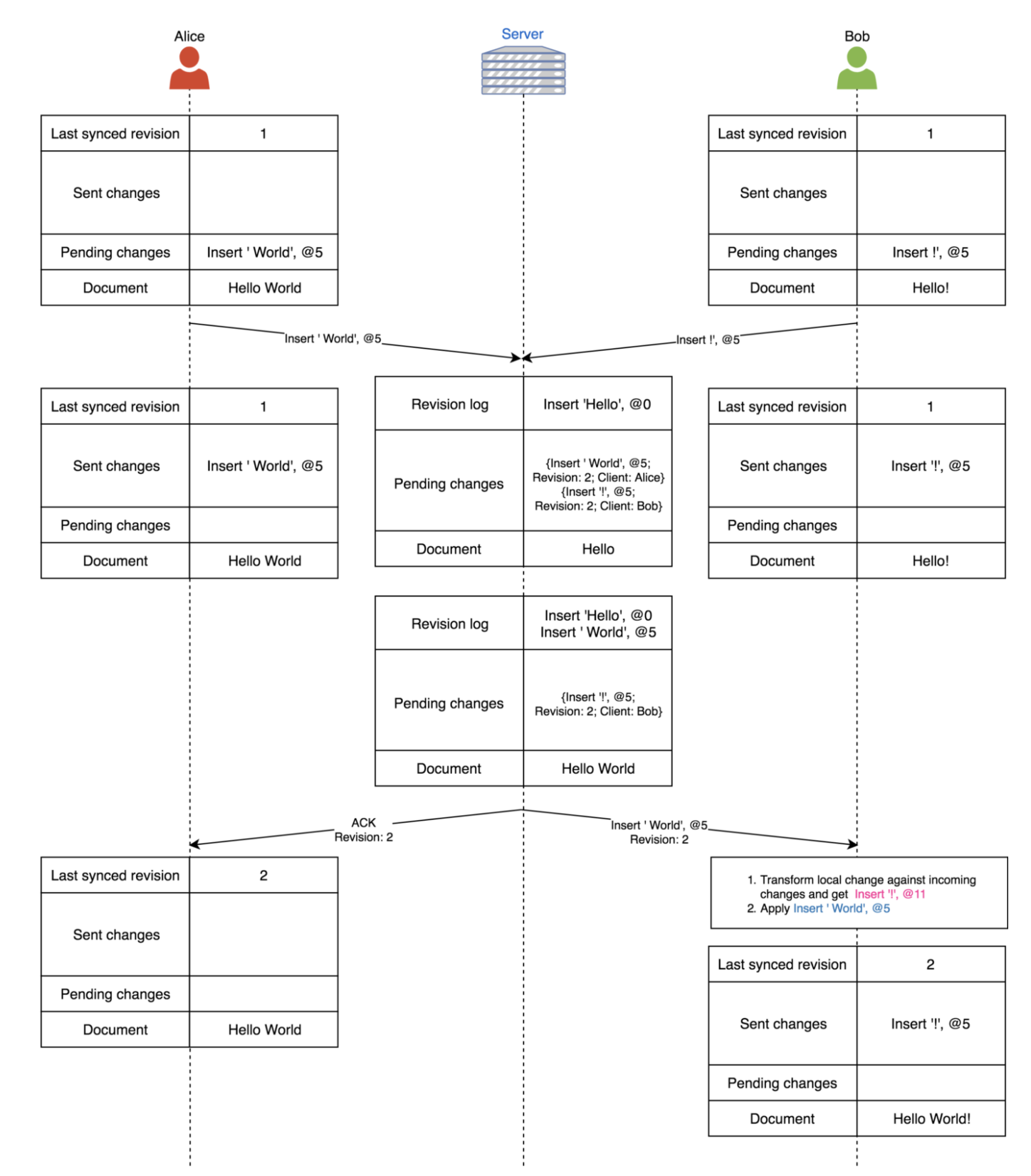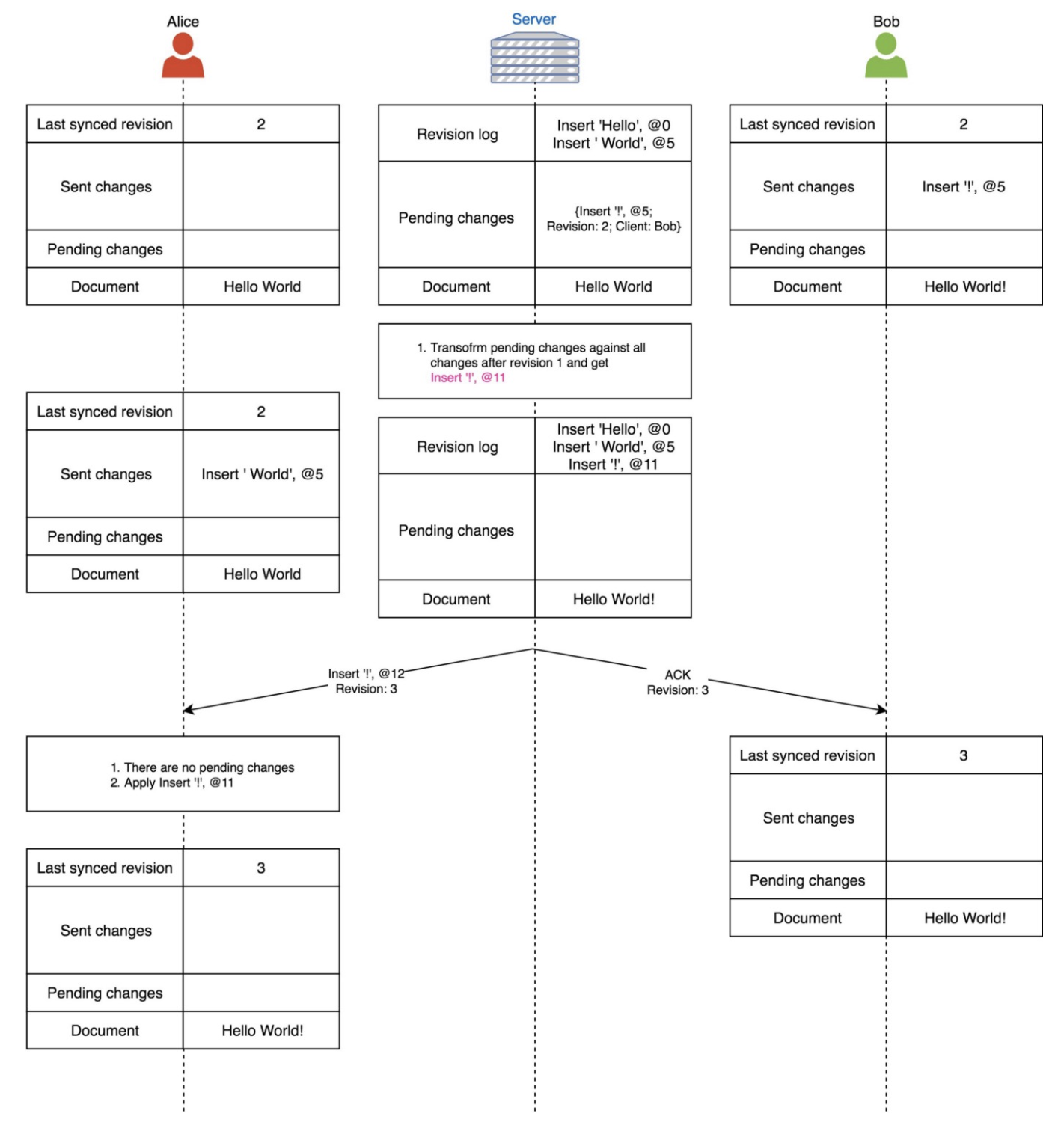Collaborative editing
System architecture
There are two possible architectures: peer-to-peer or client-server.
If using peer-to-peer pattern, the challenge is how to make sure the document among all peers are identical. If peer A makes a change and broadcast to other peers, due to the network delay the broadcast to peer C is not delivered, but is delivered to peer B. At the same time, peer B is making changes and broadcast to other peers. Peer C receives the broadcast from peer B and merge the changes. Now you could see not all peers have the same document.
If using client-server pattern, we could let the server to keep the single of truth and all clients need to be aligned with it. Client expects to receive a ACK from server before sending next request. That is because a) if no ACK, we could not garantee server received the change, so the data could loss due to network issue. b) ACK means server processed the request and transform to a new state.
Data model
type Document struct {
DocID int // The identifier to indicate which doc the operation would be performed against
Revision int // 2
Content string // Hello World
}
type Operation struct {
Kind string // Insert, Delete
Data string // "Hello"
Position int // @1, where to insert or delete
ClientID string // User: Alice
DocID int // The identifier to indicate which doc the operation would be performed against
Revision int // 2
}
type ClientDataModel struct {
LastSyncedRevision int // 1
PendingOperations []Operation // Insert(5, " World")
SentOperation Operation // Insert(0, "Hello")
}
type ServerDataModel struct {
PendingOperations []Operation // the pending changes have not been processed
ChangeHistory []struct {
Revision int
ProcessedOperation Operation
} // for history tracking
}
Algorithm
Transformation functions:
Tii(Ins[p1, c1], Ins[p2, c2]) {
if (p1 < p2) || ((p1 == p2) && (order() == -1)) // order() – order calculation
return Ins[p1, c1]; // Tii(Ins[3, ‘a’], Ins[4, ‘b’]) = Ins[3, ‘a’]
else
return Ins[p1 + 1, c1]; // Tii(Ins[3, ‘a’], Ins[1, ‘b’]) = Ins[4, ‘a’]
}
Tid(Ins[p1, c1], Del[p2]) {
if (p1 <= p2)
return Ins[p1, c1]; // Tid(Ins[3, ‘a’], Del[4]) = Ins[3, ‘a’]
else
return Ins[p1 – 1, c1]; // Tid(Ins[3, ‘a’], Del[1]) = Ins[2, ‘a’]
}
Tdi(Del[p1], Ins[p2, c1]) {
// Exercise
}
Tdd(Del[p1], Del[p2]) {
if (p1 < p2)
return Del[p1]; // Tdd(Del[3], Del[4]) = Del[3]
else
if (p1 > p2) return Del[p1 – 1]; // Tdd(Del[3], Del[1]) = Del[2]
else
return Id; // Id – identity operator
}
Workflow
- Each client has connection to server
- Client A sents
Operation(Insert or Delete) to server - Server maintain a single the state path
- Returns
ACKback to client A if theOpeartionis processed(operational transformed) - Broadcasts the processed(operational transformed)
Operationto all other clients
- Returns
- Client A receives the
ACK, means it is able to send nextOperation - Client B receives the Broadcast from server, does an operational transform on the
Incoming OperationandLocal Operationto get the latest state- If there are
Operationsfrom client B has been sent to server, but have not been processed. ThoseOperationswill be processed(operational transformed) on server side as well. So that the final state of all clients and server are identical
- If there are
Above is what Google Doc uses for its collaborative editing. It requires the ACK to be received by client before
sending next operation.
Alice type in “Hello”

Alice type in “World” and Bob type in “!”

The change from Alice will be pending, because she does not receive the ACK from server on previous Operation.
The change from Bob does not have to wait for the ACK, because it is the very first change from that client.
If the broadcast from Alice’s change delivers to Bob before sending out his change to server. The follow is what would
happen. However it is also possible Bob sends out his changes before receiving the broadcast from server, the OT function
on Bob side should calculate out the same result. Since we treat server as the source of truth.

On next step, both Alice and Bob will flush their pending changes to server. Server will process the first one gets
delivered and response with ACK and broadcast to another client. The slower client will perform the operational
transformation on its local.

The pending change on server side from Bob is out of data. Server expects to see the revision 3, but it is 2 instead. The operational transformation function on server side will calculte the correct position where to insert the changes from Bob, and applies it.

Now all clients and server have the identical docs.
Data persisitent
If client crashes or user closes the app/browser, we should be able to restore the latest change when user opens the application again. So that server needs to persist the doc content on disk. When user comes online, it will read from server with latest changes and display.